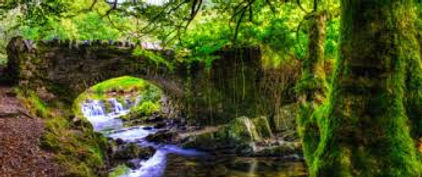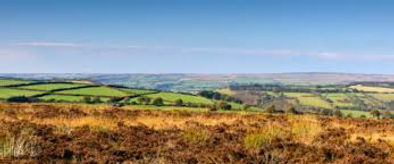
PLENTY TO DO, SEE AND ENJOY IN THIS OUTSTANDING LOCATION!
From the lodge there are lovely coastal paths to the small pretty harbour town of Watchet, returning back to the lodge inland via the path along the mineral line and the old 'Cleeve Abbey Priests' path.
Perhaps you're up for more of a challenge in which case you could walk to the medieval village of Dunster with its 18th Century Castle, starting your walk along the coast and then inland, going through the deer park and coming out at the pretty pack horse bridge at the bottom of the village.
From there you can then explore the numerous shops and cafes as well as the medieval Yarn Market (and the Castle itself!). From either of these walks you could opt to take the relaxed way home by taking the steam train back to Blue Anchor.
Dunster Castle
- Situated dramatically on a lusciously wooded hill, Dunster Castle has existed here since at least the Norman times. It has an impressive medieval gatehouse and ruined tower giving a reminder of the tumultuous times and its particular turbulent history.
- The castle that you see today became a lavish country home during the 19th century for the Luttrell family, who lived here for 600 years.
- The castle boasts spectacular views toward the Bristol channel, the Quantock hills and up to the moors of Exmoor.
- Visit here: https://www.nationaltrust.org.uk/dunster castle to learn more of the activities available at Dunster Castle.

Tarr Steps
'Tarr' is a name thought to be attained from the Celtic word 'tochar', which means 'causeway'.
It's only because the local sedimentary rocks form such suitable slabs that it was built in the first place. At 54 meters (59yds), Tarr Steps is the longest of the 40 or so clapper bridges that are left in Britain.
- Tarr Steps is a 17 span clapper bridge and is entirely constructed from large boulders and stone slabs, the longest of its kind in Britain.
- It was first mentioned in Tudor times although it may actually be much older.
- Over the last century, the river has silted up and often comes over the stones when floods occur. The bridge has been repaired several times as stones (up to two tonnes) have been washed approximately 50 metres downstream.

There is so much to do and see, no matter what the season, in this beautiful part of the country, from visiting the picturesque and historic towns and villages, walking, riding, cycling through the unspoilt countryside and across the moors or taking a trip on the Steam Railway.
You could just simply curl up with a good book in the comfort of your apartment and admire the spectacular views (with perhaps a glass of the famous local cider!).
You will be spoilt for choice.

Porlock Weir
- The picturesque village of Porlock and Porlock Weir is a short 20 minute drive along the coast.
- En-route is also the charming Selworthy Village where you could choose to enjoy a delicious cream tea.
- From the village of Porlock, after ascending its infamous hill, there are stunning views to be enjoyed all along the coastal road leading to the towns of Lynton and Lynmouth. Here you can ride on the cliff railway which links the two towns and then go on to explore the Valley of the Rocks.
- Exmoor is a wonderful place to explore; from wooded coombes to open moorland and then coastal pathways, all within one walk, cycle or drive!

Robber's Bridge
- Robbers Bridge is an old masonry arch bridge which is part of the Lorna Doone trail in Exmoor.
- Located down a steep, wooded lane beneath overhanging trees, it crosses Weir Water.
- This old stone bridge takes it name due to the fact this area was dangerous bandit territory for many centuries, this bridge being the perfect place to set their traps on many a traveller.
- The Author 'R.D. Blackmore', drew on the legends and history of this area in creating his globally known novel, Lorna Doone.
Exmoor


